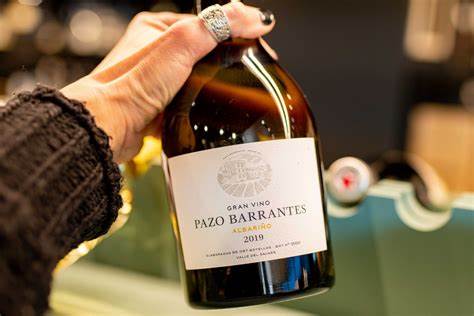One of my regular drinking companions grew up in the former Eastern Bloc, coming of age in the final days of the Cold War, when booze from decadent capitalist states like France or Italy was unavailable on her side of the Iron Curtain.
I ventured out of my windowless wine cellar for some patio boozing during the recent Chinook, and I was regaled with stories of her youth, including omnipresent brutalist architecture, the monotonous propaganda the schoolchildren recited each day in class, and long lineups for pretty much everything. And turnips, lots and lots of turnips. To this day, she will not even look at a turnip without shuddering.
I had long assumed that the only hooch available at those trying times was rotgut bathtub moonshine, or only marginally better state-sanctioned vodka churned out in huge industrial factories by the communist governments of the day.
Imagine my surprise to hear of a vibrant wine culture in Eastern Europe, dating back millenia, and continuing unabated through that brief dalliance with communism. She had considerately brought a bottle of Furmint, a white wine from Hungary that sparked only the vaguest glimmer of recollection in my eyes.
The only Hungarian wine I could recall was a sweet dessert wine called Tokaji, which was all the rage across European noble houses in the 1700s. Imagine my surprise to learn that the grape varietal from the Tokaji wine region was none other than Furmint, which is also vinified in a dry white style that was poured into my glass on that sunny patio.
The Furmint grape varietal starts its growth cycle with a thick skin, which quickly thins and becomes transparent as the season progresses, which allows sunlight to penetrate the grape, evaporating much of the juice inside, thusly elevating the sugar content.
Unlike other grape varietals, Furmint grows a second skin late in the growing season, which helps protect the fruit from rot. This unique characteristic lets the winemaker keep the grapes on the vine late into the season, which allows the grape to become intensely sweet as they spend extensive time ripening.
When picked late in the season, Furmint produces a very sweet wine, but when harvested earlier, Furmint can produce a highly fragrant dry white wine, with plenty of acidity to pair well with salty or spicy foods.
My first sip reminded me of a German Riesling, or perhaps a spicy Chenin Blanc from France, with bright tropical aromas of pineapple and citrus on the nose, followed by notes of peach and apricot on the palate. A sturdy acidic backbone helps Furmint pair well with rich dishes like herb-encrusted chicken or fish, which I will keep in mind if I ever work up the courage to dine inside a restaurant again.
The origins of Furmint are lost in the wine-soaked mists of time, but is thought to hearken back to the Middle Ages, where the varietal became popular in what is now modern-day Hungary. Originally confined to the northern regions of the country, Furmint was planted far and wide after the invading Mongol Horde swept through the region in 1241, leaving most of the country’s vineyards in ruin and need of replanting.
The region thrived as a premier wine region from the fifth century to the nineteenth, and even boasts the world’s first vineyard classification system in 1730, predating France and Italy by nearly two centuries. Sadly, the once-regal vineyards of Hungary suffered greatly under communist rule, and have been slowly rebuilding since the 1990s.
Today, Hungary has around ten thousand acres of Furmint under vine, still mostly used for sweet dessert wines, but consumer appetites for dry whites have been increasing since the turn of the new millennium. Neighbouring counties in Central and Eastern Europe also have small plantings of Furmint, but the grape is rarely grown outside of this region.
Fortunately, with the fall of the Iron Curtain, all the wines of the world are available at your friendly neighbourhood booze merchant, with more that a dozen Furmint varietals available right here in Alberta, with prices ranging from $20-$40. Put down that tired old bottle of Chardonnay, and venture down the next aisle of your well stocked wine shop to find yourself a bottle of Furmint!






